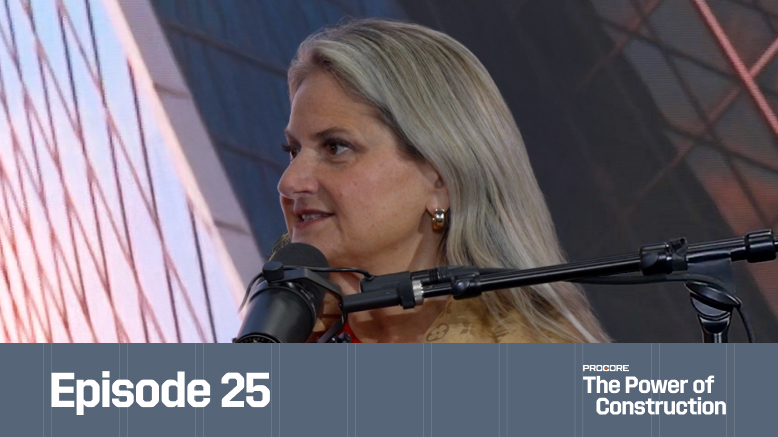— 4 min read
How Digital Tools Enhance the Construction Bidding Lifecycle


Last Updated Oct 20, 2025

Gustav Choto
Enterprise Solutions Specialist, Preconstruction
Gustav Choto is a builder of systems, stories, and spaces. Whether he’s helping a preconstruction team make smarter decisions, guiding students into the construction industry, or designing AI-powered tools for healing, mentorship, and deeper human connection, he’s always building. At Procore, he serves as a Preconstruction Solution Specialist. In this role he helps teams unlock the full potential of their preconstruction suite by leveraging his vast bank of field-testing expertise, systems thinking, and a deep empathy for frontline workflows. Choto is also an AI-architect, adept at using solutions like NotebookLM, Gemini, and Gong to support sales execution, implementation handoffs, and internal enablement. Whether he’s working in a cloud-based notebook, a classroom, or a mountain sanctuary, his goal is to help people through intention while harmonizing the inner and outer architecture of their lives.

Diane McCormick
Writer
49 articles
Diane McCormick is a freelance journalist covering construction, packaging, manufacturing, natural gas distribution, and waste oil recycling. A proud resident of Harrisburg, PA, Diane is well-versed in several types of digital and print media. Recognized as one of the premier voices in her region, she was recognized as the Keystone Media Freelance Journalist of the Year in 2022 and again in 2023.
Last Updated Oct 20, 2025

Construciton bidding is not a one-and-done job: It's a lifecycle, circulating information among owners and all levels of contractors and suppliers.
Today’s bidding software helps create an orderly, standardized bidding lifecycle that eliminates confusion, streamlines bid comparisons and tracks documentation for universal, transparent reference throughout the project.
This article explores the orchestration of the bidding cycle, the advantages that digitally enabled bidding has and the powers that well-managed bidding puts in the hands of owners, general contractors and specialty contractors.
Table of contents
Who participates in the bidding cycle?
Construction bidding is a communications flow. It’s a conduit used by owners, general contractors and specialty contractors for delivering information to the marketplace and receiving feedback in return.
It’s where projects start to take shape — drawings and documents flow to the market and feedback refines scope, viability and cost.
Often, bidding is pigeonholed into the purview of general contractors, but multiple players score wins through bidding structures that are clean, informative and primed for analysis.
Project owners want traceability and auditability in their bids. The best possible front-end process results in a completed structure that meets or exceeds expectations and ROI.
General contractors work both sides of bidding, as they submit bids to owners and solicit bids from subcontractors. Reduced friction helps them meet deadlines, scrutinize bids, vet partners, control costs and mitigate risk.
Many specialty contractors don’t think of themselves as “issuing bids,” yet they frequently solicit and compare quotes from second-tier subs, equipment vendors and material suppliers — which is bidding.
Adopting New Bidding Tech
A strategic approach to getting started helps users adopt, and adapt to, bidding software.
Map the current state.
Visualize the existing process, roles and handoffs; locate failure points (missing scope, late addenda, inbox chaos).
Create consistency.
Specific questions yield specific answers. Use dropdowns, coding and naming conventions to remove ambiguity. Add a single, visible Q&A channel so all bidders benefit from clarifications.
Prioritize prequalification.
Vet financials, safety, capacity, trade experience and past performance before inviting anyone to bid. Only qualified bidders get the request for proposal.
Iterate in rounds.
Treat early rounds as feedback loops — use market input to improve scope, align budgets and de-risk before final documents.
Today, it’s the Wild West if you’re just using email and Excel and crossing your fingers. Email and spreadsheets feel easy — until you need traceability. Structure is what lets you move fast and stay aligned.

Gustav Choto
Enterprise Solutions Specialist, Preconstruction
Procore Technologies
Leveraging Bidding Software During the Cycle
In construction technology, purpose-built bidding software brings order to chaos. Today’s software facilitates strategic, focused delivery and analysis of bids, for selection of contractors and vendors by more than just low bid.
Bidding gets better when technology enhances these capabilities.
Solicit with specificity.
Templates standardize bids across markets while allowing targeted customization for the unique, local needs of the project. The software aligns the ask with project objectives and scope. When bidders know exactly what’s needed, they resist the urge to hedge or cushion against uncertainty, which keeps the final bid numbers at their lowest.
For me as a general contractor, if I make my subcontractor’s life as risk-free as possible, it's going to allow me to get the best numbers possible.
Gustav Choto
Enterprise Solutions Specialist, Preconstruction
Procore Technologies
Gather consistent data.
Structured fields enable apples-to-apples comparisons and anomaly detection. When inputs match, reviewers can spot outliers, validate assumptions and pursue best-value (not just low-price) selections.
Don't be afraid to issue revisions.
Drawings change. Use the bidding conduit to distribute addenda and track acknowledgments so everyone prices the latest set.
Integrate data into operations.
The information from awarded packages flow into estimating, financials and analytics, preserving data for for downstream teams and future look-backs.
When a contract is won, the complete documentation — the scope (what the project includes), the assumptions (what was guessed or taken as true when creating the bid) and the final decisions (like which subcontractors to use or specific material choices) — must be kept intact.
When you do it all through a system, you have your teams who are building the job maybe a year or two later, and they can go back and look like, 'Hey, what was in here? What was the thought process?' You have a breadcrumb trail that basically tells you the story so you can reverse engineer.”
Gustav Choto
Enterprise Solutions Specialist, Preconstruction
Procore Technologies
See trends, steer early.
Enterprise analytics across projects and time reveal bidder engagement, hit/miss patterns and scope-level anomalies—informing pipeline decisions, coaching opportunities and proactive risk mitigation before they become issues.
Free AI in Construction Course with Hugh Seaton
Start learning today with industry expert Hugh Seaton and discover how AI can boost efficiency, reduce risk, and transform your projects.

Transforming Bidding with Digital Tools
Manual bidding processes might seem easy and thoroughly enmeshed in company procedures, but digital tools elevate bidding to an art.
From its position early in the project, technology-enabled bidding creates a foundation built on order and structure. Managing the details of bidding creates wins all around. Owners get top quality at the best price. General contractors submit bids based on well-informed subcontractors and a structured evaluation of price, quality, scope and schedule. Specialty contractors enter the job confident in their understanding of the services and materials to be delivered.
Transparency and structure at bid time create confidence at build time — helping teams deliver the best possible project, on time and on budget.
Was this article helpful?
Thank you for your submission.
67%
33%
You voted that this article was . Was this a mistake? If so, change your vote
Scroll less, learn more about construction.
Subscribe to The Blueprint, Procore’s construction newsletter, to get content from industry experts delivered straight to your inbox.
By clicking this button, you agree to our Privacy Notice and Terms of Service.
Thank you!
You’re signed up to receive The Blueprint newsletter from Procore. You can unsubscribe at any time.
Categories:
Written by

Gustav Choto
Enterprise Solutions Specialist, Preconstruction | Procore Technologies
Gustav Choto is a builder of systems, stories, and spaces. Whether he’s helping a preconstruction team make smarter decisions, guiding students into the construction industry, or designing AI-powered tools for healing, mentorship, and deeper human connection, he’s always building. At Procore, he serves as a Preconstruction Solution Specialist. In this role he helps teams unlock the full potential of their preconstruction suite by leveraging his vast bank of field-testing expertise, systems thinking, and a deep empathy for frontline workflows. Choto is also an AI-architect, adept at using solutions like NotebookLM, Gemini, and Gong to support sales execution, implementation handoffs, and internal enablement. Whether he’s working in a cloud-based notebook, a classroom, or a mountain sanctuary, his goal is to help people through intention while harmonizing the inner and outer architecture of their lives.
View profile
Diane McCormick
Writer | Procore Technologies
49 articles
Diane McCormick is a freelance journalist covering construction, packaging, manufacturing, natural gas distribution, and waste oil recycling. A proud resident of Harrisburg, PA, Diane is well-versed in several types of digital and print media. Recognized as one of the premier voices in her region, she was recognized as the Keystone Media Freelance Journalist of the Year in 2022 and again in 2023.
View profileExplore more helpful resources

Defending Against Financial & Legal Risks on Megaprojects
The construction industry has seen marked growth in megaprojects. Some experts classify any project over $500 million as a megaproject, while others argue that the build needs to be $1...

Unlocking Project Intelligence: Moving from Raw Data to Actionable Insights
The construction industry faces a wide range of challenges, from ongoing labor shortages to frequent cost overruns. But some the biggest hurdles all stem from unpredictability. The general contractors (GCs)...

Who is accountable for innovation in construction?
Everyone says construction needs to innovate—but no one agrees on who’s actually responsible for making it happen. Is it the owner? The builders? The tech vendor? Or is innovation everyone’s...

Integrated Project Delivery in Practice: A Framework for Collaboration
On construction projects, traditional delivery methods put different stakeholders in their own silos. While the design team feeds drawings and specifications to the general contractor (GC), the GC’s expertise in...
Free Tools
Calculators
Use our calculators to estimate the cost of construction materials for your next project.
Templates
Find a template to help you with your construction project tasks.
Material Price Tracker
Get the latest U.S. retail prices and view historical trends for common building materials.
Glossary
Explore key terms and phrases used in the industry.
